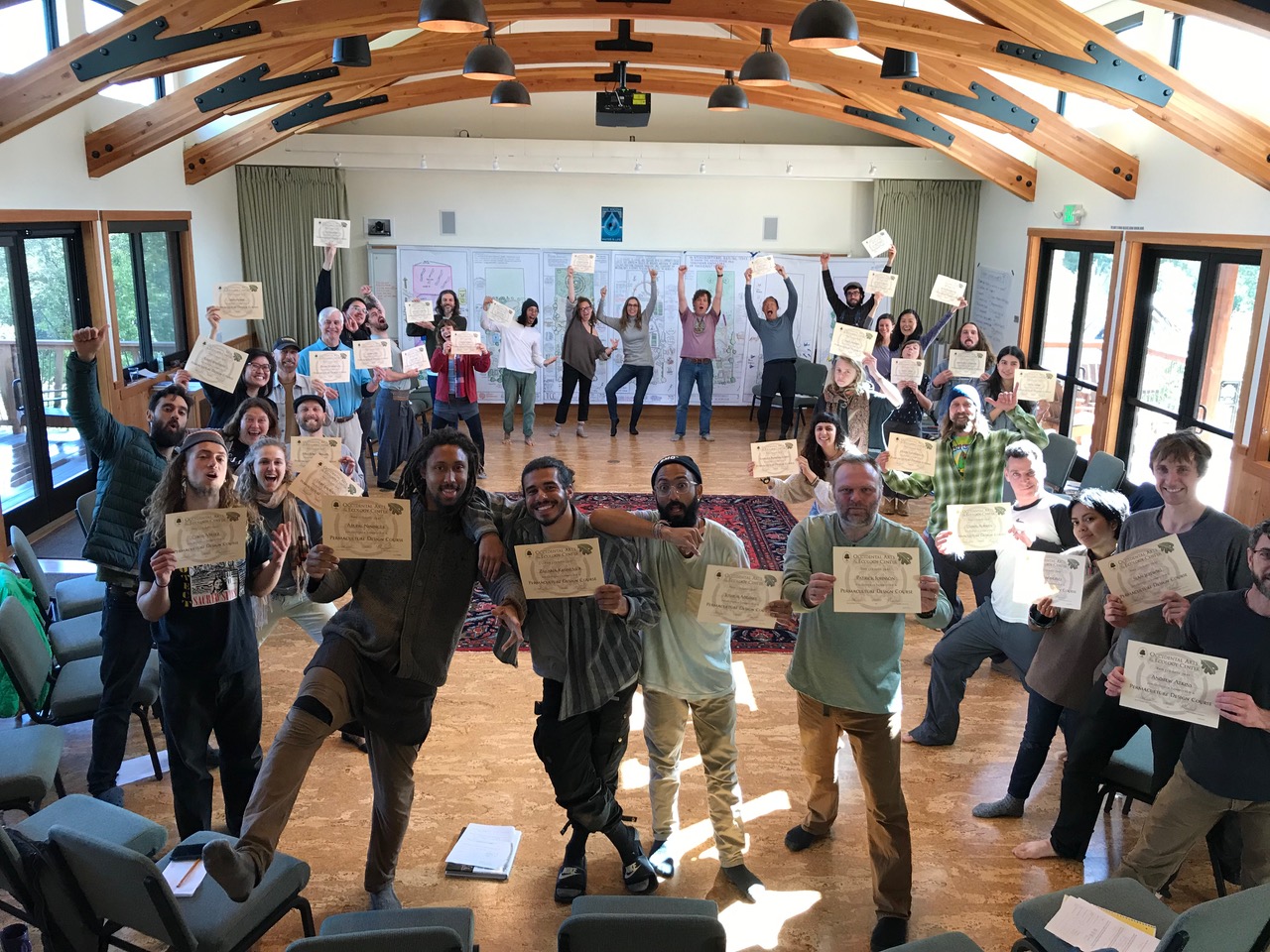Occidental Arts and Ecology Center: Meeting Hall and Guest Housing
In response to the need to increase the capacity and quality of guest accommodations and residential workshops, we were asked to design three new Guest Housing buildings and a new Meeting Hall for the iconic Occidental Arts & Ecology Center (OAEC). These two elements made up the final components of a master plan for the facility, all created to help increase the impact and reach of the organization, and to make it one of the premier retreat venues in California. The immediate challenges were to design and create impactful structures that fit into the existing master plan, were appropriately sited to celebrate the facility’s dedication to permaculture and meet OAEC’s mission of resilient living.
The three new Guest Housing structures clustered together with two existing yurt bunkhouses to create a housing village. One is a fully accessible studio unit, and the other two are three-bedroom buildings with a shared bath. The Guest Housing called to the barrel-vaulted roofs of the original, private housing units on site dubbed, “Solar Suburbia”. The design was then transformed through the addition of dormers and clerestory windows, as well as in response to the site conditions – nesting against the hillside and opening up to the view of the extensive gardens simultaneously.
Adjacent to, and in a prominent, central location, the Meeting Hall was sited and designed with a central light monitor, to serve as a beacon for arriving guests to be oriented to the site. The layout of the Meeting Hall includes a large meeting room, smaller conference room, a more informal lounge space, and a gathering hub that gives groups multiple meeting options. A large deck overlooking the garden, and an intimate circular courtyard space, expanded the gathering opportunities. The Meeting Hall was inspired by the beautiful, timber frame barn on site.
To meet the mission of resilient living of OAEC, passive heating and cooling techniques were incorporated, including the extensive use of daylighting. The exterior materials included natural lime plaster, repurposed corrugated metal siding, and reclaimed wood from a local chicken barn. The interiors included site-built casework of locally sourced hardwood, and flooring made from cork, madrone, and sisal. Composting toilets were installed as part of a pilot program with the county building department to introduce new technology in the standard building process.
Founded in 1994, The Occidental Arts & Ecology Center (OAEC) is an 80-acre research, demonstration, education, advocacy and community-organizing center in West Sonoma County, California that develops strategies for regional-scale, community resilience and the restoration of biological and cultural diversity. Through residentially-based classes and group retreats, OAEC trains and supports “whole communities”- schools, public agencies, Native American tribes, urban social justice organizations, watershed groups and others – to design and cultivate resilience to mounting ecological, social and economic challenges. We were honored to collaborate with an incredible group of people that make up OAEC, and to help cement its legacy as truly a visionary, environmental education center.
Design Challenge
The overarching goal of the project was to meet the challenge of designing impactful structures that fit into an existing master plan, were appropriately sited, and met the mission of resilient living.- Purposeful design to integrate into an existing master plan
- New housing construction that linked with existing structures to create a “housing village”
- Centrally locating the Meeting Hall and including a central light monitor, to serve as a beacon for arriving guests to be oriented to the site
- Deliberate design solutions that harken to existing building forms while themselves transformative
- Design vocabulary inspired by the timber frame barn on-site: board and batten siding, soaring spaces with custom timber framed trusses
- Barrel vaulted roofs calling to original site housing
- Thoughtful use of materials and innovative building techniques to carry the mission of resilient living
- Passive heating and cooling techniques were incorporated, including the extensive use of daylighting
- Exterior materials included natural lime plaster, repurposed corrugated metal siding, and reclaimed wood from a local chicken barn
- Interiors included site-built casework of locally sourced hardwood, and flooring made from cork, madrone, and sisal
- Composting toilets were installed as part of a pilot program with the county building department to introduce new technology in the standard building process
Physical Context
The solution to increase the quality and capacity of guest accommodations and residential workshops was developed for the project as it responded to the surrounding physical context:- Careful siting of new construction to fit into existing master plan and honor the spirit of biodiversity-focused farming, gardening, and permaculture
- Constructing forms to simultaneously nest against the hillside terrain and open up to the view of the extensive gardens
- Expand gathering opportunities by constructing a large deck overlooking the gardens and an intimate circular courtyard space










